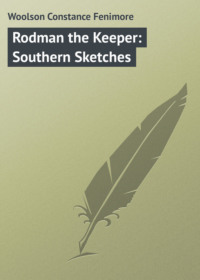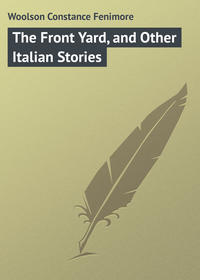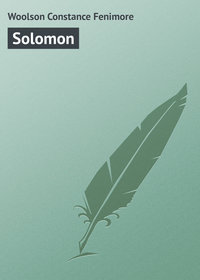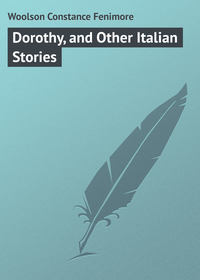 полная версия
полная версияMentone, Cairo, and Corfu
After long neglect, something is being done at last to arrest the ruin of the more ancient of these temples. A commission has been appointed by the present government whose duty is the preservation of the monuments of Arabian art; occasionally, therefore, in a mosque one finds scaffolding in place and a general dismantlement. One can only hope for the best – in much the same spirit in which one hopes when one sees the beautiful old front of St. Mark's, Venice, gradually encroached upon by the new raw timbers.
But in Cairo, at least, the work of repairing goes on very slowly; three hundred mosques, probably, out of the four hundred still remain untouched, and many of these are adorned with a delicate beauty which is unrivalled. I know no quest so enchanting as a search through the winding lanes of the old quarters for these gems of Saracenic taste, which no guide-book has as yet chronicled, no dragoman discovered. The street is so narrow that your donkey fills almost all the space; passers-by are obliged to flatten themselves against the walls in response to the Oriental adjurations of your donkey-boy behind: "Take heed, O maid!" "Your foot, O chief!" Presently you see a minaret – there is always a minaret somewhere; but it is not always easy to find the mosque to which it belongs, hidden, perhaps, as it is, behind other buildings in the crowded labyrinth. At length you observe a door with a dab or two of the well-known Saracenic honeycomb-work above it; instantly you dismount, climb the steps, and look in. You are almost sure to find treasures, either fragments of the pearly Cairo mosaic, or a wonderful ceiling, or gilded Kufic (old Arabian text) inscriptions and arabesques, or remains of the ancient colored glass which changes its tint hour by hour. Best of all, sometimes you find a space open to the sky, with a fountain in the centre, the whole surrounded by arcades of marble columns adorned with hanging lamps (or, rather, with the bronze chains which once carried the lamps), and with suspended ostrich eggs – the emblems of good-luck. One day, when my donkey was making his way through a dilapidated region, I came upon a mosque so small that it seemed hardly more than a base for its exquisite minaret, which towered to an unusual height above it. Of course I dismounted. The little mosque was open; but as it was never visited by strangers, it possessed no slippers, and without coverings of some kind it was impossible that unsanctified shoes, such as mine, should touch its matted floor; the bent, ancient guardian glared at me fiercely for the mere suggestion. One sees sometimes (even in 1890) in the eyes of old men sitting in the mosques the original spirit of Islam shining still. Once their religion commanded the sword; they would like to grasp it again, if they could. It was suggested that the matting might, for a backsheesh, be rolled up and put away, as the place was small. But the stern old keeper remained inflexible. Then the offer was made that so many piasters – ten (that is, fifty cents) – would be given to the blind. Now the blind are sacred in Cairo; this offer, therefore, was successful; all the matting was carefully rolled and stacked in a corner, the three or four Muslims present withdrew to the door, and the unbeliever was allowed to enter. She found herself in a temple of color which was incredibly rich. The floor was of delicate marble, and every inch of the walls was covered with a mosaic of porphyry and jasper, adorned with gilded inscriptions and bands of Kufic text; the tall pulpit, made of mahogany-colored wood, was carved from top to bottom in intricate designs, and ornamented with odd little plaques of fretted bronze; the sacred niche was lined with alabaster, turquoise, and gleaming mother-of-pearl; the only light came through the thick glass of the small windows far above, in downward-falling rays of crimson, violet, and gold. The old mosaic-work of the Cairo mosques is composed of small plates of marble and of mother-of-pearl arranged in geometrical designs; the delicacy of the minute cubes employed, and the intricacy of the patterns, are marvellous; the color is faint, unless turquoise has been added; but the glitter of the mother-of-pearl gives the whole an appearance like that of jewelry. Upon our departure five blind men were found drawn up in a line at the door. It would not have been difficult to collect fifty.
Another day, as my donkey was taking me under a stone arch, I saw on one side a flight of steps which seemed to say "Come!" At the top of the steps I found a picture. It was a mosque of the early pattern, with a large square court open to the sky. In the centre of this court was a well, under a marble dome, and here grew half a dozen palm-trees. Across the far end extended the sanctuary, which was approached through arcades of massive pillars painted in dark red bands. The pulpit was so old that it had lost its beauty; but the entire back wall of this Mecca side was covered with beautiful tiles of the old Cairo tints (turquoise-blue and dark blue), in designs of foliage, with here and there an entire tree. This splendid wall was in itself worth a journey. A few single tiles had been inserted at random in the great red columns, reminding one of the majolica plates which tease the eyes of those who care for such things – set impossibly high as they are – in the campaniles of old Italian churches along the Pisan coast.
It may be asked, What is the shape of a mosque – its exterior? What is it like? You are more sure about this shape before you reach the Khedive's city than you are when you have arrived there; and after you have visited three or four mosques each day for a week, the clearness of your original idea, such as it was, has vanished forever. The mosques of Cairo are so embedded in other structures, so surrounded and pushed and elbowed by them, that you can see but little of their external form; sometimes a façade painted in stripes is visible, but often a doorway is all. One must except the mosque of Sultan Hassan (which, to some of us, is dangerously like Aristides the Just). This mosque stands by itself, so that you can, if you please, walk round it. The chief interest of the walk (for the exterior, save for the deep porch, which can hardly be called exterior, is not beautiful) lies in the thought that as the walls were constructed of stones brought from the pyramids, perhaps among them, with faces turned inward, there may be blocks of that lost outer coating of the giant tombs – a coating which was covered with hieroglyphics. Now that hieroglyphics can be read, we may some day learn the true history of these monuments by pulling down a dozen of the Cairo mosques. But unless the commission bestirs itself, that task will not be needed for the edifice of Sultan Hassan; it is coming down, piece by piece, unaided. The mosques of Cairo are not beautiful as a Greek temple or an early English cathedral is beautiful; the charm of Saracenic architecture lies more in decoration than in the management of massive forms. The genius of the Arabian builders manifested itself in ornament, in rich effects of color; they had endless caprices, endless fancies, and expressed them all – as well they might, for all were beautiful. The same free spirit carved the grotesques of the old churches of France and Germany. But the Arabians had no love for grotesques; they displayed their liberty in lovely fantasies. Their one boldness as architects was the minaret.
It is probably the most graceful tower that has ever been devised. In Cairo the rich fretwork of its decorations and the soft yellow hue of the stone of which it is constructed add to this beauty. Invariably slender, it decreases in size as it springs towards heaven, carrying lightly with it two or three external galleries, which are supported by stalactites, and ending in a miniature cupola and crescent. These stalactites (variously named, also, pendentives, recessed clusters, and honey-combed work) may be called the distinctive feature of Saracenic architecture. They were used originally as ornaments to mask the transition from a square court to the dome. But they soon took flight from that one service, and now they fill Arabian corners and angles and support Arabian curves so universally that for many of us the mere outline of one scribbled on paper brings up the whole pageant of the crescent-topped domes and towers of the East.
The Cairo mosques are said to show the purest existing forms of Saracenic architecture. One hopes that this saying is true, for a dogmatic superlative of this sort is a rock of comfort, and one can remember it and repeat it. With the best of memories, however, one cannot intelligently see all these specimens of purity, unless, indeed, one takes up his residence in Cairo (and it is well known that when one lives in a place one never pays visits to those lions which other persons journey thousands of miles to see). Travellers, therefore, very soon choose a favorite and abide by it, vaunting it above all others, so that you hear of El Ghouri, with its striking façade and magnificent ceiling, as "the finest," and of Kalaoon as "the finest," and of Moaiyud as ditto; not to speak of those who prefer the venerable Touloun and Amer, and the undiscriminating crowd that is satisfied, and rightly, with Aristides the Just – that is, the mosque of Sultan Hassan. For myself, after acknowledging to a weakness for the mosques which are not in the guide-books, which possess no slippers, I confess that I admire most the tomb-mosque of Kait Bey. It is outside of Cairo proper, among those splendid half-ruined structures the so-called tombs of the Khalifs. It stands by itself, its chiselled dome and minaret, a lace-work in stone, clearly revealed. It would take pages to describe the fanciful beauty of every detail, both without and within, and there must, in any case, come an end of repeating the words "elegance," "mosaic," "minaret," "arabesque," "jasper," and "mother-of-pearl." The chief treasures of this mosque are two blocks of rose granite which bear the so-called impressions of the feet of Mohammed; the legend is that he rests here for a moment or two at sunset every Thursday. "How well I understand this fancy of the prophet!" exclaimed an imaginative visitor. "How I wish I could do the same!"
THE GIZEH MUSEUMOne of the great events of the winter of 1890 was the opening of the new Museum of Egyptian Antiquities at Gizeh. This magnificent collection, which until recently has been ill-housed at Boulak, is now installed in another suburb, Gizeh, in one of the large summer palaces built by the former Khedive, Ismail. To reach it one passes through the new quarter and crosses the handsome Nile bridge. Not only are all these streets watered, but the pedestrian also can have water if he likes. Large earthen jars, propped by framework of wood, stand here and there, with the drinking-bottle, or kulleh, attached; these jars are replenished by the sakkahs, who carry the much-loved Nile water about the streets for sale. One passes at regular intervals the light stands, made of split sticks, upon which is offered for sale, in flat loaves like pancakes, the Cairo bread. There are also the open-air cook shops – small furnaces, like a tin pan with legs; spread out on a board before them are saucers containing mysterious compounds, and the cook is in attendance, wearing a white apron. These cooks never lack custom; a large majority of the poorer class in Cairo obtains its hot food, when it obtains it at all, at these impromptu tables. Before long one is sure to meet a file of camels. The camel ought to appreciate travellers; there is always a tourist murmuring "Oh!" whenever one of these supercilious beasts shows himself near the Ezbekiyeh Gardens. The American, indeed, cannot keep back the exclamation; perhaps when he was a child he attended (oh, happy day!) the circus, and watched with ecstasy the "Grande Orientale Rentrée of the Lights of the Harem" – two of these strange steeds, ridden by dazzling houris in veils of glittering gauze. The camel has remained in his mind ever since as the attendant of sultanas; though this impression may have become mixed in later years with the constantly recurring painting (in a dead-gold frame and red mat) of a camel and an Arab in the desert, outlined against a sunset sky. In either case, however, the animal represents something which is as far as possible from an American street traversed by horse-cars, and when the inhabitant of this street sees the identical creature passing him, engaged not in making rentrées or posing against the sunset, but diligently at work carrying stones and mortar for his living, no wonder he feels that he has reached a land of dreams.
Most of us do not lose our admiration for the Orientalness of the camel. But we learn in time that he has been praised for qualities which he does not possess. He is industrious, but he continually scolds about his industry; he may not trouble one with his thirst, but he revenges himself by his sneer. The smile of a camel is the most disdainful thing I know. On the other side of the Nile bridge one comes sometimes upon an acre of these beasts, all kneeling down in the extraordinary way peculiar to them, with their hind-legs turned up; here they chew as they rest, and put out their long necks to look at the passers-by. But the way to appreciate the neck of a camel is to be on a donkey; then, when the creature comes up behind and lopes past you, his neck seems to be the highest thing in Cairo – higher than a mosque.
Beyond the bridge the road to Gizeh follows the river. Gizeh itself is the typical Nile village, with the low, clustered houses built of Nile mud (which looks like yellow-brown stucco), and beautiful feathery palms with a minaret or two rising above. The palace stands apart from the village, and is surrounded by large gardens. Opposite the central portico is the tomb of Mariette Pasha, the founder of the museum – a high sarcophagus designed from an antique model. Mariette Pasha (it may be mentioned here that the title Pasha means General, and that of Bey, Colonel) was a native of Boulogne. A mummy case in the museum of that town of schools first attracted his attention towards Egyptian antiquities, and in 1850 he came to Egypt. Khedive Said authorized him to found a museum; and Said's successor, Ismail, conferred upon him the exclusive right to make excavations, placing in his charge all the antiquities of Egypt. Mariette used these powers with intelligence and energy, giving the rest of his life to the task – a period of thirty years. He died in Cairo, at the age of sixty-one, in January, 1882. This Frenchman made many important discoveries, and he preserved to Egypt her remaining antiquities; before his time her treasures had been stolen and bought by all the world. A thought which haunts all travellers in this strange country is, how many more rich stores must still remain hidden! The most generally interesting among the recent discoveries was the finding of the Pharaohs, in 1881. The story has been given to the world in print, therefore it will be only outlined here. But by far the most fortunate way is to hear it directly from the lips of the keeper of the museum, Emil Brugsch Bey himself, his vivid, briefly direct narration adding the last charm to the striking facts. By the museum authorities it had been for several years suspected that some one at Luxor (Thebes) had discovered a hitherto unopened tomb; for funeral statuettes, papyri, and other objects, all of importance, were offered for sale there, one by one, and bought by travellers, who, upon their return to Cairo, displayed the treasures, without comprehending their value. Watch was kept, and suspicion finally centred upon a family of brothers; these Arabs at last confessed, and one of them led the way to a place not far from the temple called Deir-el-Bahari, which all visitors to Thebes will remember. Here, filled with sand, there was a shaft not unlike a well, which the man had discovered by chance. When the sand was removed, the opening of a lateral tunnel was visible below, and this tunnel led into the heart of the hill, where, in a rude chamber twenty feet high, were piled thirty or more mummy cases, most of them decorated with the royal asp. The mummies proved to be those of Sethi the First, the conqueror who carried his armies as far into Asia as the Orontes; and of Rameses the Great (called Sesostris by the Greeks), the Pharaoh who oppressed the Israelites; and of Sethi the Second, the Pharaoh of the Exodus, together with other sovereigns and members of their families, princes, princesses, and priests. At some unknown period these mummies had been taken from the magnificent rock tombs in that terrible Apocalyptic Valley of the Kings, not far distant, and hidden in this rough chamber. No one knows why this was done; a record of it may yet be discovered. But in time all knowledge of the hiding-place was lost, and here the Pharaohs remained until that July day in 1881. They were all transported across the burning plain and down the Nile to Cairo. Now at last they repose in state in an apartment which might well be called a throne-room. You reach this great cruciform hall by a handsome double stairway; upon entering, you see the Pharaohs ranged in a majestic circle, and careless though you may be, unhistorical, practical, you are impressed. The features are distinct. Some of the dark faces have dignity; others show marked resolution and power. Curiously enough, one of them closely resembles Voltaire. This, however, is probably due to the fact that Voltaire closely resembled a mummy while living. How would it seem, the thought that beings who are to come into existence A.D. 5000 should be able, in the land which we now call the United States of America (what will it be called then?), to gaze upon the features of some of our Presidents – for instance, George Washington and Abraham Lincoln? I am afraid that the fancy is not as striking as it should be, for New World ambition grasps without difficulty all futures, even A.D. 25,000; it is only when our eyes are turned towards the past, where we have no importance and represent nothing, that an enumeration of centuries overpowers us – a little. But in any case, after visiting Egypt, we all learn to hate the art of the embalmer; those who have been up the Nile, and beheld the poor relics of mortality offered for sale on the shores, become, as it were by force, advocates of cremation.
The Gizeh Museum is vast; days are required to see all its treasures. Among the best of these are two colored statues, the size of life, representing Prince Rahotep and his wife; these were discovered in 1870 in a tomb near Meydoom. Their rock-crystal eyes are so bright that the Arabs employed in the excavation fled in terror when they came upon the long-hidden chamber. They said that two afreets were sitting there, ready to spring out and devour all intruders. Railed in from his admirers is the intelligent, well-fed, highly popular wooden man, whose life-like expression raises a smile upon the faces of all who approach him. This figure is not in the least like the Egyptian statues of conventional type, with unnaturally placed eyes. As regards the head, it might be the likeness of a Berlin merchant of to-day, or it might be a successful American bank president after a series of dinners at Delmonico's. Yet, strange to say, this, and the wonderful diorite statue of Chafra, are the oldest sculptured figures in the world.
One is tempted to describe some of the other treasures of this precious and unrivalled collection, as well as to note in detail the odd contrasts between Ismail's gayly flowered walls and the solemn antiquities ranged below them. "But here is no space," as Lady Mary Wortley Montagu would have expressed it. And one of the curious facts concerning description is that those who have with their own eyes seen the statue, for instance, which is the subject of a writer's pen (and it is the same with regard to a landscape, or a country, or whatever you please) – such persons sometimes like to read an account of it, though the words are not needed to bring up the true image of the thing delineated, whereas those who have never seen the statue – that is, the vast majority – are, as a general rule, not in the least interested in any description of it, long or short, and, indeed, consider all such descriptions a bore.
At present the one fault of Gizeh is the absence of a catalogue. But catalogues are a mysterious subject, comprehended only by the elect.
One day when I was passing the hot hours in the shaded rooms of the museum, surrounded by seated granite figures with their hands on their knees (the coolest companions I know), I heard chattering and laughter. These are unusual sounds in those echoing halls, where unconsciously everybody whispers, partly because of the echo, and partly also, I think, on account of the mystic mummy cases which stand on end and look at one so queerly with their oblique eyes. Presently there came into view ten or twelve Cairo ladies, followed by eunuchs, and preceded by a guide. The eunuchs were (as eunuchs generally are) hideous, though they represented all ages, from a tall lank boy of seventeen to a withered old creature well beyond sixty. The Cairo eunuchs are negroes; one distinguishes them always by the extreme care with which they are dressed. They wear coats and trousers of black broadcloth made in the latest European style, with patent-leather shoes, and they are decorated with gold chains, seal rings, and scarf-pins; they have one merit as regards their appearance – I know of but one – they do look clean. The ladies were taking their ease; the muffling black silk outer cloaks, which all Egyptian women of the upper class wear when they leave the house, had been thrown aside; the white face veils had been loosened so that they dropped below the chin. It was the hareem of the Minister for Foreign Affairs; their carriages were waiting below. The most modest of men – a missionary, for instance, or an entomologist – would, I suppose, have put them to flight; but as the tourist season was over, and as it was luncheon-time for Europeans, no one appeared but myself, and the ladies strayed hither and thither as they chose, occasionally stopping to hear a few words of the explanations which the guide (a woman also) was vainly trying to give before each important statue. With one exception, these Cairo dames were, to say the least, extremely plump; their bare hands were deeply dimpled, their cheeks round. They all had the same very white complexion without rose tints; their features were fairly good, though rather thick; the eyes in each case were beautiful – large, dark, lustrous, with sweeping lashes. Their figures, under their loose garments, looked like feather pillows. They were awkward in bearing and gait, but this might have been owing to the fact that their small plump feet (in white open-work cotton stockings) were squeezed into very tight French slippers with abnormally high heels, upon which it must have been difficult to balance so many dimples. The one exception to the rule of billowy beauty was a slender, even meagrely formed girl, who in America would pass perhaps for seventeen; probably she was three years younger. Her thin, dark, restless face, with its beautiful inquiring eyes, was several times close beside mine as we both inspected the golden bracelets and ear-rings, the necklaces and fan, of Queen Ahhotpu, our sister in vanity of three thousand five hundred years ago. I looked more at her than I did at the jewels, and she returned my gaze; we might have had a conversation. What would I not have given to have been able to talk with her in her own tongue! After a while they all assembled in what is called the winter garden, an up-stairs apartment, where grass grows over the floor in formal little plots. Chairs were brought, and they seated themselves amid this aerial verdure to partake of sherbet, which the youngest eunuch handed about with a business-like air. While they were still here, much relaxed as regards attire and attitude, my attention was attracted by the rush through the outer room (where I myself was seated) of the four older eunuchs. They had been idling about; they had even gone down the stairs, leaving to the youngest of their number the task of serving the sherbet; but now they all appeared again, and the swiftness with which they crossed the outer room and dashed into the winter-garden created a breeze. They called to their charges as they came, and there was a general smoothing down of draperies. The eunuchs, however, stood upon no ceremony; they themselves attired the ladies in the muffling cloaks, and refastened their veils securely, as a nurse dresses children, and with quite as much authority. I noticed that the handsomer faces showed no especial haste to disappear from view; but there was no real resistance; there was only a good deal of laughter.









